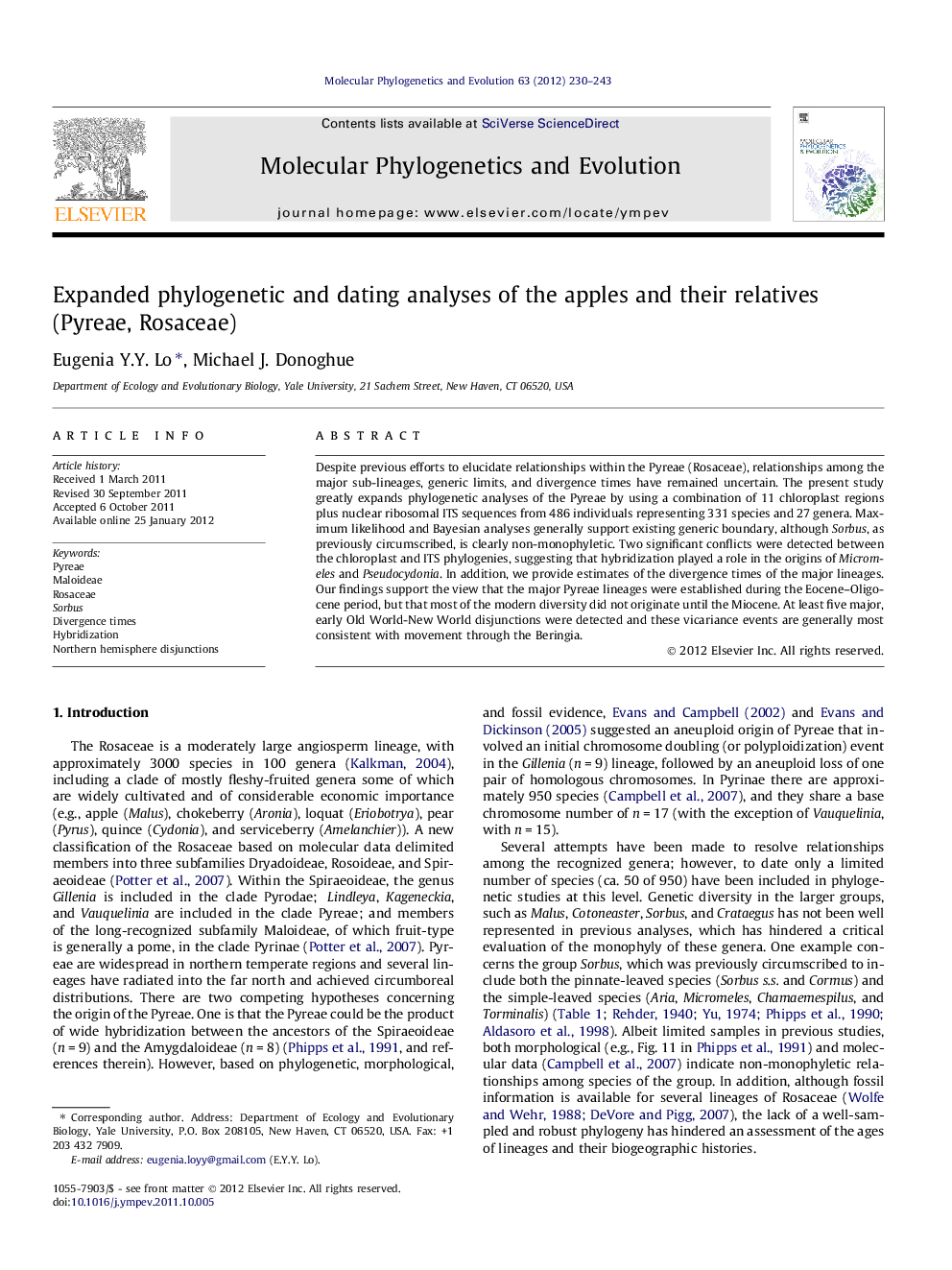| Article ID | Journal | Published Year | Pages | File Type |
|---|---|---|---|---|
| 2834043 | Molecular Phylogenetics and Evolution | 2012 | 14 Pages |
Despite previous efforts to elucidate relationships within the Pyreae (Rosaceae), relationships among the major sub-lineages, generic limits, and divergence times have remained uncertain. The present study greatly expands phylogenetic analyses of the Pyreae by using a combination of 11 chloroplast regions plus nuclear ribosomal ITS sequences from 486 individuals representing 331 species and 27 genera. Maximum likelihood and Bayesian analyses generally support existing generic boundary, although Sorbus, as previously circumscribed, is clearly non-monophyletic. Two significant conflicts were detected between the chloroplast and ITS phylogenies, suggesting that hybridization played a role in the origins of Micromeles and Pseudocydonia. In addition, we provide estimates of the divergence times of the major lineages. Our findings support the view that the major Pyreae lineages were established during the Eocene–Oligocene period, but that most of the modern diversity did not originate until the Miocene. At least five major, early Old World-New World disjunctions were detected and these vicariance events are generally most consistent with movement through the Beringia.
Graphical abstractFigure optionsDownload full-size imageDownload as PowerPoint slideHighlights► We perform phylogenetic and dating analyses with expanded Pyreae samples and genes. ► Data support existing generic boundary except Sorbus which is not monophyletic. ► Hybridization played a role in the origins of Micromeles and Pseudocydonia. ► The major Pyreae lineages were established during the Eocene–Oligocene period. ► Modern diversity of the Pyreae was originated until the Miocene.
